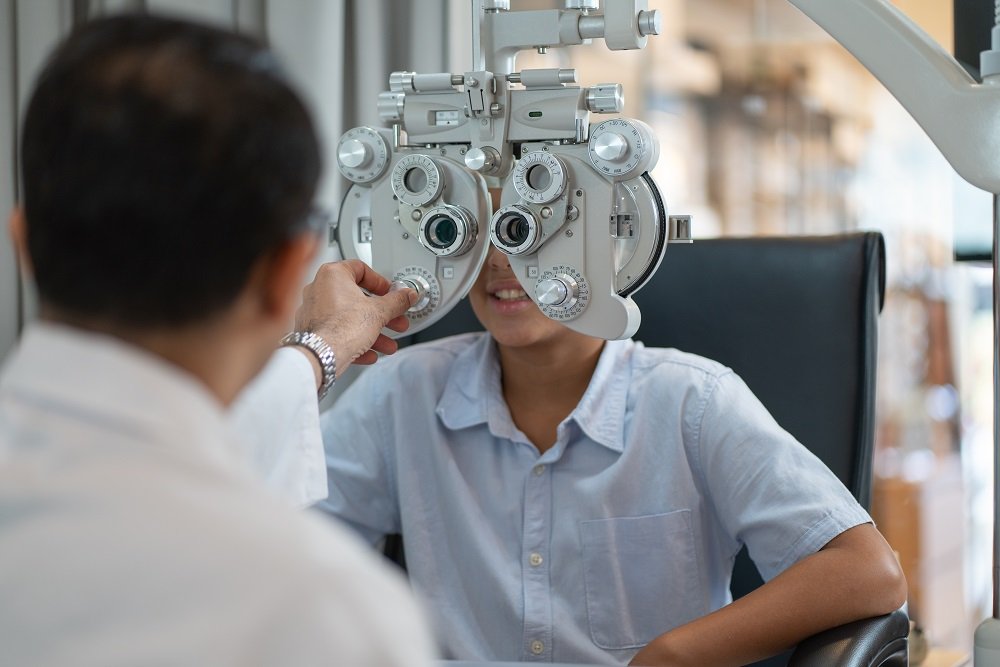Squint, more commonly referred to as “crossed eyes” or “walleye”, represents not just a cosmetic concern but also a potential challenge to one’s vision. Going beyond the superficial perception of it being merely a misalignment of the eyes, squints can have profound medical implications. If not addressed in a timely manner, this condition can escalate, causing significant vision problems that might impede daily activities. As we journey through this comprehensive guide, we will explore the intricate nuances of squint eyes— delving deep into its causes, understanding preventive measures, and uncovering natural remedies that offer relief.
Contents
What is Squint Eyes?
Often recognized as a misalignment or deviation, a squint— scientifically termed strabismus— is a visual disorder wherein the eyes fail to focus in tandem on a singular point of interest. It isn’t as simple as one eye drifting away while the other stays fixated. The intricate ballet of our eyes can be disrupted in various ways: one eye might diligently focus on an object, while its twin might wander inwards, veer outwards, shift upwards, or even stray downwards. This abnormality is not merely about aesthetics; it disrupts the harmony of vision. The stark contrast between an individual with a typical eye alignment and someone squinting isn’t just evident but can also impact how they perceive their environment.
Causes of Squint Eyes
General Causes: The underpinnings of squint eyes can be multifaceted. At the heart of this condition, you might find issues directly related to the intricate muscles responsible for eye movement. But beyond the immediate physical structures, the problem may also stem from deeper within — in the neural pathways and regions of the brain that orchestrate and direct these very muscles.
Babies and Toddlers: When it comes to our younger ones, the reasons for a squint can be particularly distressing for parents. Often, these causes trace back to premature birth, where the visual system hasn’t developed fully. Congenital disabilities, which refer to medical conditions present at birth, can also be at play. It’s essential to monitor and consult pediatricians for early detection.
Adults: The onset of squint eyes isn’t restricted to childhood. In adults, various factors can trigger this condition. Physical trauma, underlying general health conditions, or the emergence of eye conditions such as cataracts can be the culprits behind a squint’s advent later in life.
Genetics and Environmental Factors: Delving into the family tree might provide clues to a person’s squint. A pronounced family history of this condition can hint at genetic predisposition. Additionally, certain environmental factors, especially conditions during a mother’s pregnancy or during the early developmental stages of a child, can amplify the risk factors.
Recognizing and Identifying Squint Eyes
Identifying a squint requires a keen eye, no pun intended.
Regular Check-ups: These are invaluable, especially for children. Pediatricians and ophthalmologists can spot subtle signs that might be overlooked by untrained eyes. Their expertise can help in early diagnosis, ensuring timely intervention.
Symptoms to Watch: Beyond the overt misalignment, there are subtler signs. A child frequently rubbing their eyes might be trying to adjust or clear their vision. Complaints of double vision can’t be brushed off, as they indicate visual disruptions. Even a squint that appears intermittently, like when a child is tired, should be noted.
Pets and Squinting: Our feline and canine companions also display signs of discomfort or relaxation through their eyes. While cats might squint as a sign of trust or relaxation, dogs might do so due to minor irritations or even to convey calmness. Observing these behaviors can offer insights into their well-being and emotions.
Prevention of Squint Eyes
Regular Eye Check-ups: One cannot overstate the significance of consistent eye examinations. Like many medical conditions, the earlier a squint is detected, the better the prognosis. Regular check-ups with ophthalmologists provide an opportunity not just to catch a developing squint but to monitor overall eye health, ensuring that potential problems are nipped in the bud.
Early Treatment: The realm of ocular health is one where time is of the essence. Addressing any visual disturbances or abnormalities during their early stages significantly reduces the chances of them evolving into a full-blown squint. Immediate intervention ensures the preservation of visual quality and prevents further complications.
Lifestyle Factors: Our modern lives are irrevocably tethered to screens. However, reducing prolonged exposure, especially in low light, can stave off vision problems. Equally vital is a balanced diet, rich in green leafy vegetables and fish, ensuring our eyes get the necessary nutrients for optimal function.
Natural Remedies and Treatment Options
Eye Exercises: Beyond their role in rehab post-injuries, specific exercises tailored for the eyes can enhance muscle strength and coordination. These exercises, often recommended by therapists, can train the eyes to align correctly and focus efficiently.
Holistic Approaches: Eastern medicinal practices like yoga and acupuncture have been extolled for their holistic benefits. When it comes to ocular health, specific yoga poses and acupuncture points have shown promise in alleviating symptoms and even preventing squints in some individuals.
Supplements: Nutrition plays a pivotal role in eye health. Supplements rich in Vitamins A, C, and E provide antioxidants that protect the eyes. Minerals like zinc boost the retina’s health, ensuring clear vision and reduced risk of disorders.
Surgical and Non-surgical Interventions

Considering Surgery: In cases where squints are persistent and have a pronounced impact on vision or appearance, surgical interventions might be the route taken. Such surgeries aim to adjust the tension of the eye muscles, ensuring better alignment. However, like all surgical procedures, it’s paramount to understand the benefits against potential risks.
Non-surgical Options: Not all squints necessitate a visit to the operating room. Non-invasive approaches like corrective glasses can often address the root causes, especially if the squint results from refractive errors. Eye patches, especially for children, can train a wandering eye to focus correctly, rectifying minor misalignments without the need for surgical intervention.
The Psychological Impact of Squint Eyes
Facing the Social Labyrinth: Living with squint eyes isn’t merely a physiological challenge; the psychological repercussions can be profound. Individuals, especially children, may find themselves at the receiving end of unsolicited remarks or curiosity. Such experiences can be daunting, often leading to feelings of alienation, self-consciousness, or a dented self-image.
Navigating Self-Esteem Challenges: The human psyche is complex, and self-perception often gets intertwined with our physical attributes. Those with squints might grapple with self-worth issues, questioning their place in social circles or doubting their capabilities.
The Power of a Supportive Environment: A nurturing environment, both at home and in educational institutions, can significantly alter the trajectory for those with squint eyes. Counseling, peer support groups, and simple gestures of understanding can be transformative, bolstering self-esteem and fostering resilience.
Myths and Misconceptions
Breaking Down Fallacies: Squint eyes, like many conditions, are shrouded in myths. The commonly held belief that squints result from “straining the eyes excessively” or “not using the right prescription glasses” oversimplifies a multifaceted condition.
Spreading the Right Information: To ensure individuals with squints receive the care they deserve, it’s paramount to address and debunk these misconceptions. Educative campaigns and open dialogues can be instrumental in dispelling myths, promoting awareness, and directing those affected towards appropriate care.
At a cursory glance, squint eyes might seem like just a deviation in eye alignment. However, as we’ve delved deeper, it’s evident that the condition is layered with physiological and psychological complexities. From the challenges it poses to the myths that surround it, understanding squint eyes requires a comprehensive approach. Awareness, early detection, and timely interventions, coupled with empathy and support, can make all the difference in navigating the challenges of this condition and fostering holistic well-being.
Dr Shital

Dr. Shital S. Lalwani is an experienced ophthalmologist and general physician in Pune with over 21 years of experience. He practices at Jeevan Sparsh Eye Hospital Market Yard, Kondhawa, NIBM . Dr. Lalwani completed his MBBS in 2002 and DNB in Ophthalmology in 2006.

